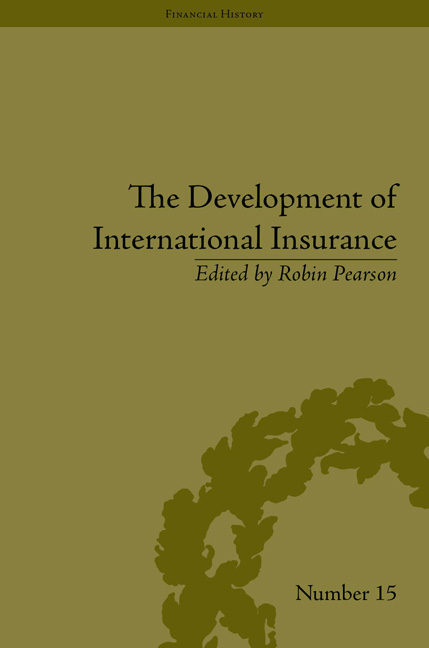Book contents
- Frontmatter
- CONTENTS
- Preface
- List of Figures and Tables
- List of Contributors
- Introduction
- Part I Non-Life Insurance
- 1 The Marine Insurance Market for British Textile Exports to the River Plate and Chile, c. 1810–50
- 2 Actuarial Practice, Probabilistic Thinking and Actuarial Science in Private Casualty Insurance
- 3 The Difficulties of Spanish Insurance Companies to Modernize during the Franco Years: The Mechanization of Administrative Tasks and the Introduction of the First Computers, 1950–70
- 4 Multilateral Insurance Liberalization, 1948–2008
- Part II Life, Health and Social Insurance
- Notes
- Works Cited
- Index
1 - The Marine Insurance Market for British Textile Exports to the River Plate and Chile, c. 1810–50
from Part I - Non-Life Insurance
- Frontmatter
- CONTENTS
- Preface
- List of Figures and Tables
- List of Contributors
- Introduction
- Part I Non-Life Insurance
- 1 The Marine Insurance Market for British Textile Exports to the River Plate and Chile, c. 1810–50
- 2 Actuarial Practice, Probabilistic Thinking and Actuarial Science in Private Casualty Insurance
- 3 The Difficulties of Spanish Insurance Companies to Modernize during the Franco Years: The Mechanization of Administrative Tasks and the Introduction of the First Computers, 1950–70
- 4 Multilateral Insurance Liberalization, 1948–2008
- Part II Life, Health and Social Insurance
- Notes
- Works Cited
- Index
Summary
Introduction
In the 1810s the River Plate and Chile gained independence after three centuries of Spanish dominion. From that point, British merchants opened for the very first time mercantile houses on the spot, marketing European manufactures in exchange for South American produce. During the first decades following independence, the main products imported by the new South American republics were textiles. These comprised over 80 per cent of British exports to the River Plate and Chile between 1815 and 1859 (see Figure 1.1).
Despite the predominance of textiles within British exports to these emergent markets, very little is known about the marketing chain of textile exports. This chapter sheds new light on this underexplored subject, by focusing on one aspect of this textile trade, namely, the marine insurance market in which British textile cargoes were insured before departing for the Southern Cone.
This chapter relies heavily on the business correspondence of Huth & Co., a London-based mercantile house with branches in Liverpool, Valparaiso, Tacna, Arequipa and Lima, and which was very active in the marine insurance market. However, this firm was just one among over 250 British merchant houses trading with the Southern Cone during the first half of the nineteenth century.
- Type
- Chapter
- Information
- The Development of International Insurance , pp. 25 - 36Publisher: Pickering & ChattoFirst published in: 2014



